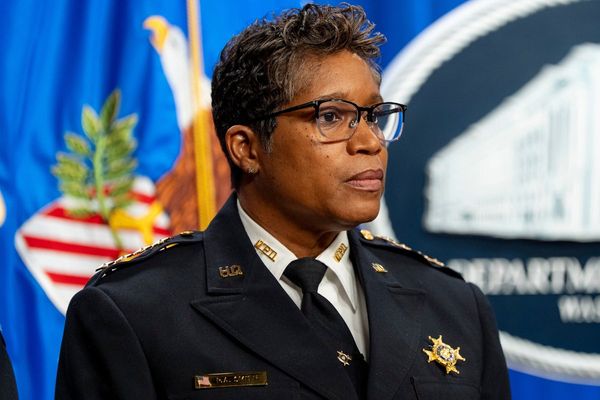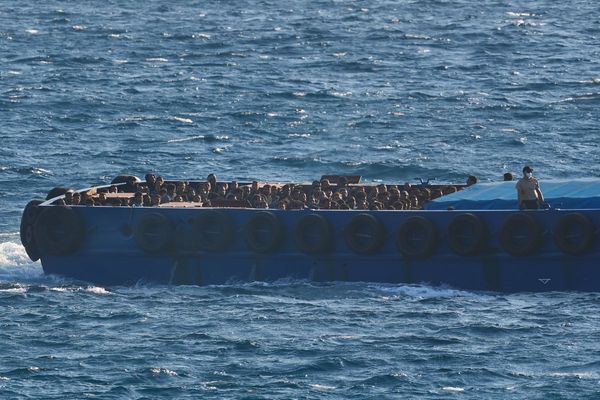
Death Stranding 2, like its predecessor, is a game that is polarizing for many. When you "get it," like I and many others do, you simply just feel it on an indescribable level and appreciate each of its head-scratching intricacies. If you didn't "get" the first game, the sequel likely won't change your mind.
But for those with an open mind willing to give a truly original story and gameplay loop a genuine try, DS2 feels like the culmination of everything Kojima has wanted to do in his open-world games, creating something that feels like playable art when at its best.
Keep on keeping on

From a gameplay perspective, DS2 improves on the original in many ways. The gameplay missions feel more varied in structure, offering changes of pace every now and then as opposed to consecutive delivery missions where you're walking for a few dozen minutes at a time.
Like in the first, you're encouraged to make the journey easier by constructing roads, ziplines, vehicles, and other additions to the post-apocalyptic world to help yourself and others. It's always a joy to see a new construct pop out of nowhere, as it was made by another player in the living world, really driving forth the "connection" that Kojima was looking for in the series. It's this feeling of working together with strangers where a lot of the game's satisfaction and joy comes from, at least for me.
A strategic approach is both encouraged and necessary for many of the game's missions, whether you're carrying important cargo over a mountain, infiltrating a base filled with ghost robot enemies with coffins on their back, dealing with giant mechs, or sneaking past horrifying and ghostly BT's so they don't overwhelm you.
Unfortunately, combat in DS2 still feels a bit wonky, but it's still not the main focal point of the gameplay. Some missions require stealth, while others require a head-on approach, but you have to be careful in how you conduct yourself in the game so as not to actually kill any other human being and create a nuclear bomb-like Voidout that will render an area of the map unplayable for a time.
While the combat leaves a lot to be desired, the rest of the game's seemingly passive gameplay segments where you deliver packages or rebuild society scratch an itch that's difficult to be explained, and won't resonate with everyone, even if a lot of it feels a bit dumbed down to appeal to more of an audience than the original game captured.
Whimsical and nonsensical, but poignant

Death Stranding 2's story is as weird and unique as it is thought-provoking and emotional, bringing forward allure that made the original worth playing in spite of its gameplay that often felt lacking. Sam Porter Bridges' journey throughout Mexico and Australia is full of predictable twists and turns, but I still felt a lump in my throat throughout most of it.
The majority of DS2 is not a happy game, so be prepared for some heavy themes and imagery as you make your way through Sam's 30-plus-hour-long story. Plot points include loss of human life, grief, violence, personal tragedy, isolation, and depression as you attempt to navigate the world around you and connect people together in an effort to bring the world back from the brink.
Set against these serious themes, though, are the silly oddities and weird characters Kojima is known for. Returning characters like Fragile, Deadman, Heartman, and the villainous guitar-playing Higgs are joined by wild newcomers like Tarman (an old man who is able to navigate a massive airship through tar), Dollman (a spirit medium whose soul got inexplicably got trapped in a puppet), Rainy (a pregnant woman who can control the rain), and Tomorrow (barefoot Elle Fanning) in what may be Kojima's oddest adventure yet.
Among the many people you meet along the journey in DS2, there's also a pizza maker who teaches you a special melee attack, a VTuber you deliver packages to, and several real-life friends of Kojima who he scanned into the game, like the band CHVRCHES. It's just wacky.
Still, the desire to progress through DS2's story and reach its emotional, stunning, and mind-bending conclusion is what drives you to finish each delivery, and "keep on keeping on" as the environment seemingly crumbles around you, and Sam, too.

The world of Death Stranding is one of the most unique and original creations in recent years, so I will always be happy to revisit it and its characters, especially considering that Kojima Productions' utilization of Guerrilla Games' Decima Engine has created what's arguably one of the best-looking titles ever made. Every environment character is richly vivid and realistic, and truly something to behold on a PS5 Pro.
Listen closely and intently

Kojima's love of music and the soundtrack of his life is brought to fruition in DS2 with a music player that Sam can take on his journeys, but the most impactful songs happen as you're traveling through the world on a lengthy journey.
These specific tunes are timed for moments in the game and pop up when you least expect them (or when you most need them after or during an arduous task), triggering all sorts of emotions and offering a reprieve from the sometimes-monotonous delivery driver journeys through the expansive landscapes of Mexico and Australia.
The game's score accentuates these moments, composed once again by the talented Ludvig Forssell, utilizing the ultra-heartbreaking "BB's Theme" from the original game at its most crucial points to drive me to tears. It helps to evoke some deeply personal feelings and emotions that not many other games have been able to.
The post Death Stranding 2: On the Beach review – Life, death, and a delivery man with a talking puppet appeared first on Destructoid.







